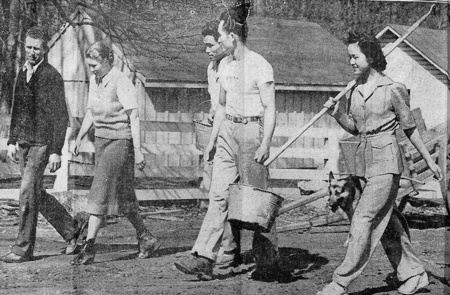During World War II many Japanese Americans were relocated and detained in camps, most located in western states, including California. Special Collections holds several collections of materials focused on Japanese internment. While exploring the Carey McWilliams War Relocation Authority Records for her research, Hilary Blum, a CGU student, was excited to find documents discussing the censorship of newspaper photographs from the camps. Here’s what she had to say about her discovery.
“Most scholarship concerning the reactions of Japanese Americans to incarceration during WWII addresses attempts to prove loyalty, for example, through cooperation with relocation or through military service. Scholars have also paid significant attention to those who resisted the removal of their rights through active means such as through the courts and through refusal to serve in the military. While cooperation and active resistance are important fields of study, little attention has been paid to the less apparent, everyday forms of resistance in the camps. In my thesis, I will address how many Japanese Americans resisted generalized anti-Japanese racism, racialized laws, incarceration, and cultural white-washing during WWII through greater adherence to traditional Japanese culture and religion and by documenting their experiences in the camps.
“I expect that the Claremont Library Special Collections will be very useful in my research. Recently I was excited to find War Relocation Authority [WRA] documents about the censoring of newspaper photography of the camps. The WRA wanted to control public perceptions of the camps and limiting photography was one way they accomplished this. I am also looking forward to exploring the Iwanaga Collection of Heart Mountain photographs taken by a person incarcerated there who wanted to document his experiences in the camps.”

If you are interested in exploring Special Collections’ holdings on Japanese internment, try searching for “Japanese internment” on the library home page (Library Search) and limit to Special Collections, or browse these archival collections in the Online Archive of California.